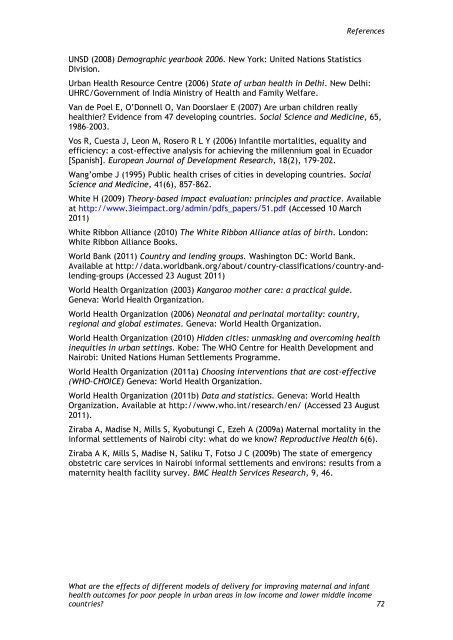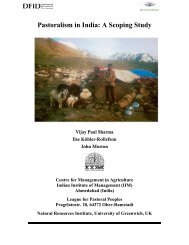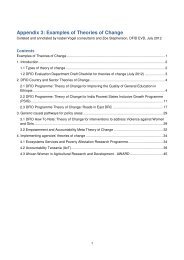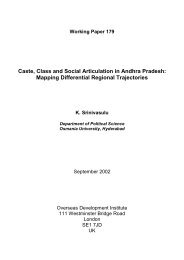Full Report - Research for Development - Department for ...
Full Report - Research for Development - Department for ...
Full Report - Research for Development - Department for ...
You also want an ePaper? Increase the reach of your titles
YUMPU automatically turns print PDFs into web optimized ePapers that Google loves.
UNSD (2008) Demographic yearbook 2006. New York: United Nations Statistics<br />
Division.<br />
References<br />
Urban Health Resource Centre (2006) State of urban health in Delhi. New Delhi:<br />
UHRC/Government of India Ministry of Health and Family Welfare.<br />
Van de Poel E, O’Donnell O, Van Doorslaer E (2007) Are urban children really<br />
healthier? Evidence from 47 developing countries. Social Science and Medicine, 65,<br />
1986–2003.<br />
Vos R, Cuesta J, Leon M, Rosero R L Y (2006) Infantile mortalities, equality and<br />
efficiency: a cost-effective analysis <strong>for</strong> achieving the millennium goal in Ecuador<br />
[Spanish]. European Journal of <strong>Development</strong> <strong>Research</strong>, 18(2), 179-202.<br />
Wang’ombe J (1995) Public health crises of cities in developing countries. Social<br />
Science and Medicine, 41(6), 857-862.<br />
White H (2009) Theory-based impact evaluation: principles and practice. Available<br />
at http://www.3ieimpact.org/admin/pdfs_papers/51.pdf (Accessed 10 March<br />
2011)<br />
White Ribbon Alliance (2010) The White Ribbon Alliance atlas of birth. London:<br />
White Ribbon Alliance Books.<br />
World Bank (2011) Country and lending groups. Washington DC: World Bank.<br />
Available at http://data.worldbank.org/about/country-classifications/country-andlending-groups<br />
(Accessed 23 August 2011)<br />
World Health Organization (2003) Kangaroo mother care: a practical guide.<br />
Geneva: World Health Organization.<br />
World Health Organization (2006) Neonatal and perinatal mortality: country,<br />
regional and global estimates. Geneva: World Health Organization.<br />
World Health Organization (2010) Hidden cities: unmasking and overcoming health<br />
inequities in urban settings. Kobe: The WHO Centre <strong>for</strong> Health <strong>Development</strong> and<br />
Nairobi: United Nations Human Settlements Programme.<br />
World Health Organization (2011a) Choosing interventions that are cost-effective<br />
(WHO-CHOICE) Geneva: World Health Organization.<br />
World Health Organization (2011b) Data and statistics. Geneva: World Health<br />
Organization. Available at http://www.who.int/research/en/ (Accessed 23 August<br />
2011).<br />
Ziraba A, Madise N, Mills S, Kyobutungi C, Ezeh A (2009a) Maternal mortality in the<br />
in<strong>for</strong>mal settlements of Nairobi city: what do we know? Reproductive Health 6(6).<br />
Ziraba A K, Mills S, Madise N, Saliku T, Fotso J C (2009b) The state of emergency<br />
obstetric care services in Nairobi in<strong>for</strong>mal settlements and environs: results from a<br />
maternity health facility survey. BMC Health Services <strong>Research</strong>, 9, 46.<br />
What are the effects of different models of delivery <strong>for</strong> improving maternal and infant<br />
health outcomes <strong>for</strong> poor people in urban areas in low income and lower middle income<br />
countries? 72









